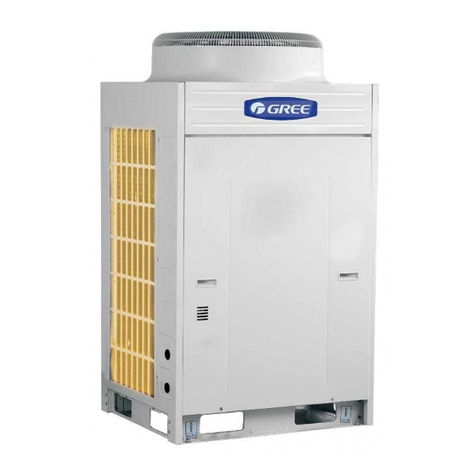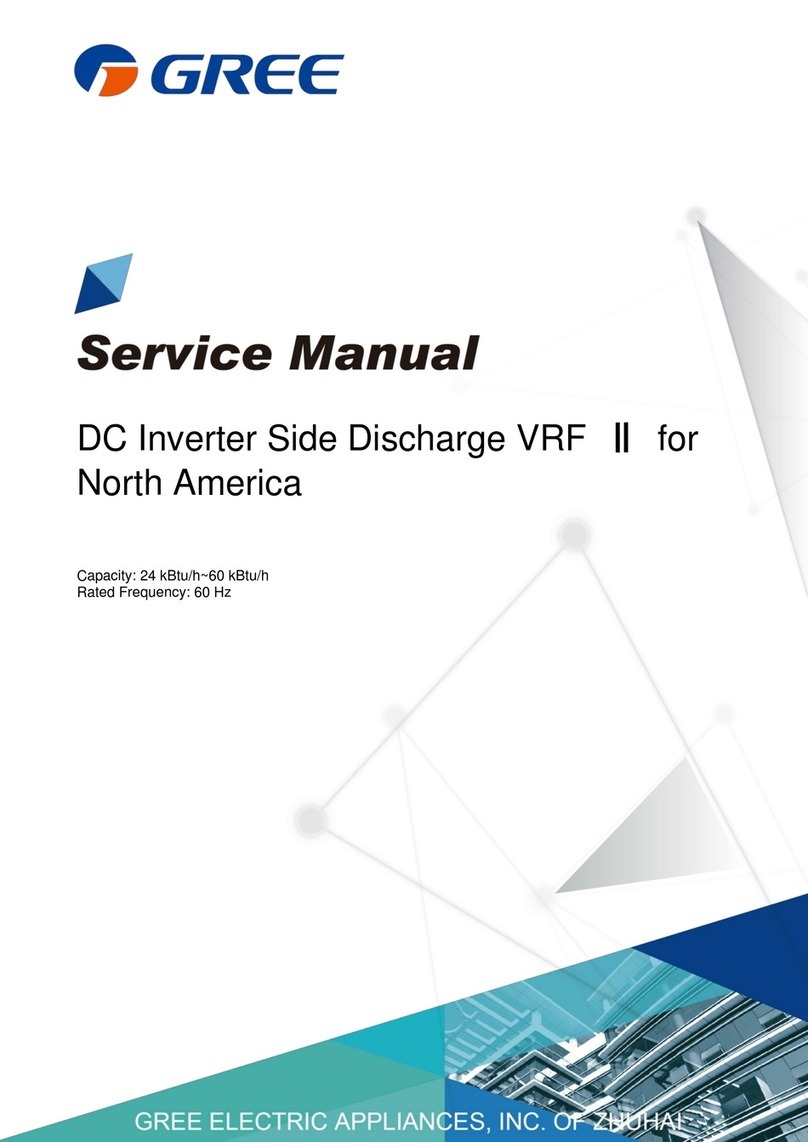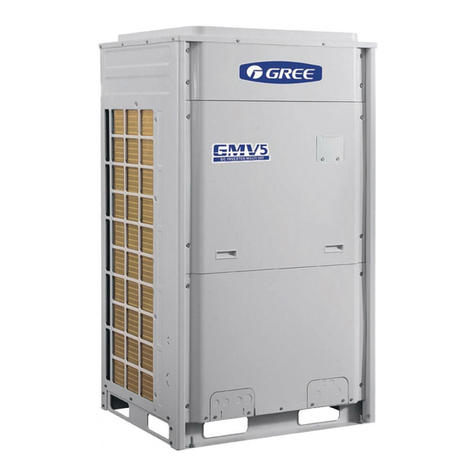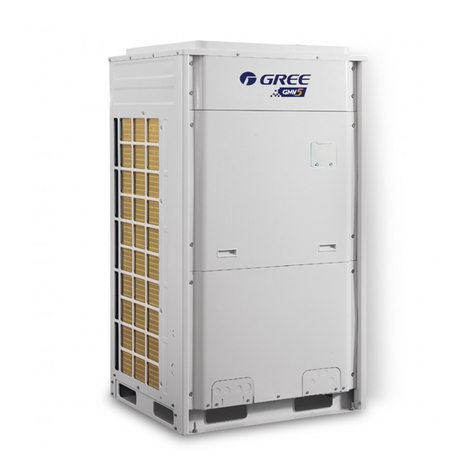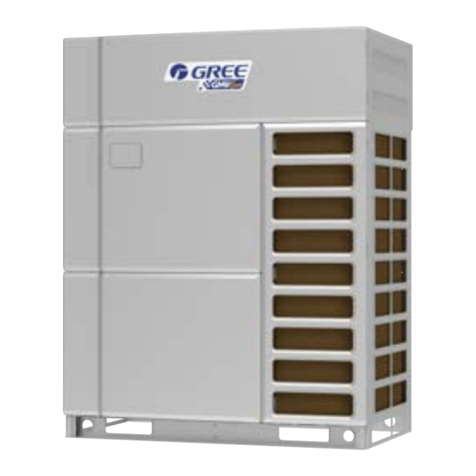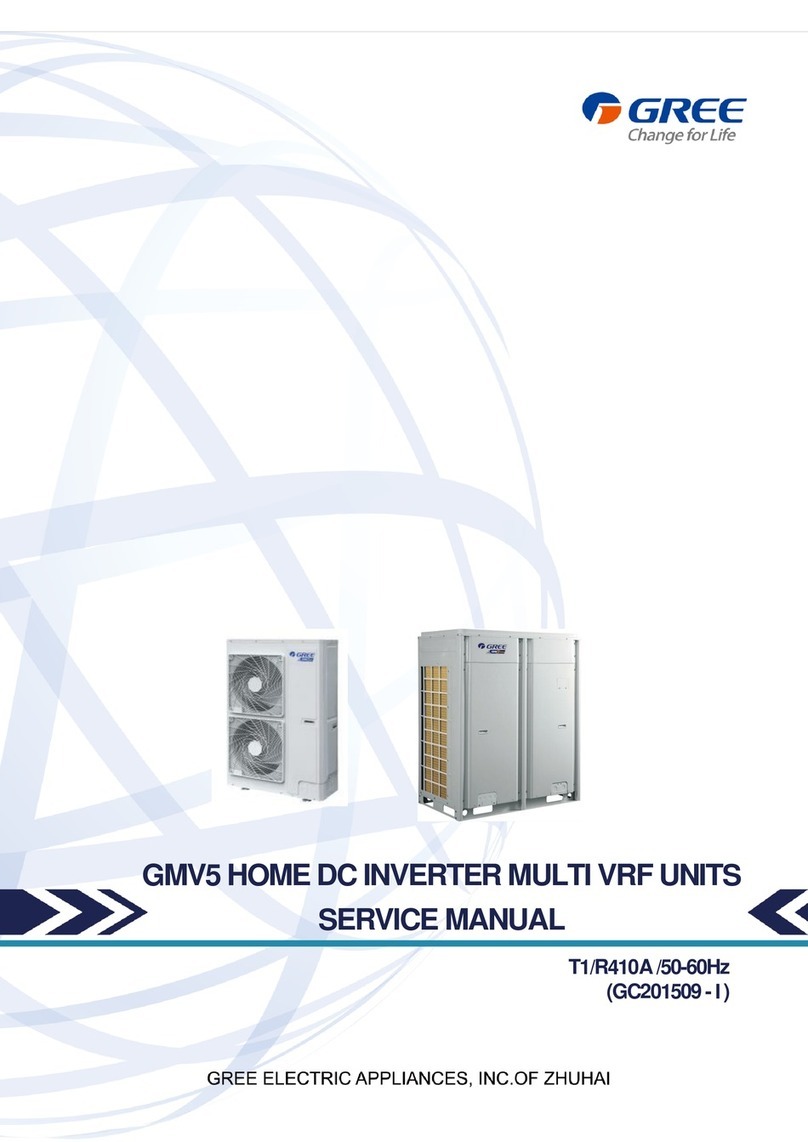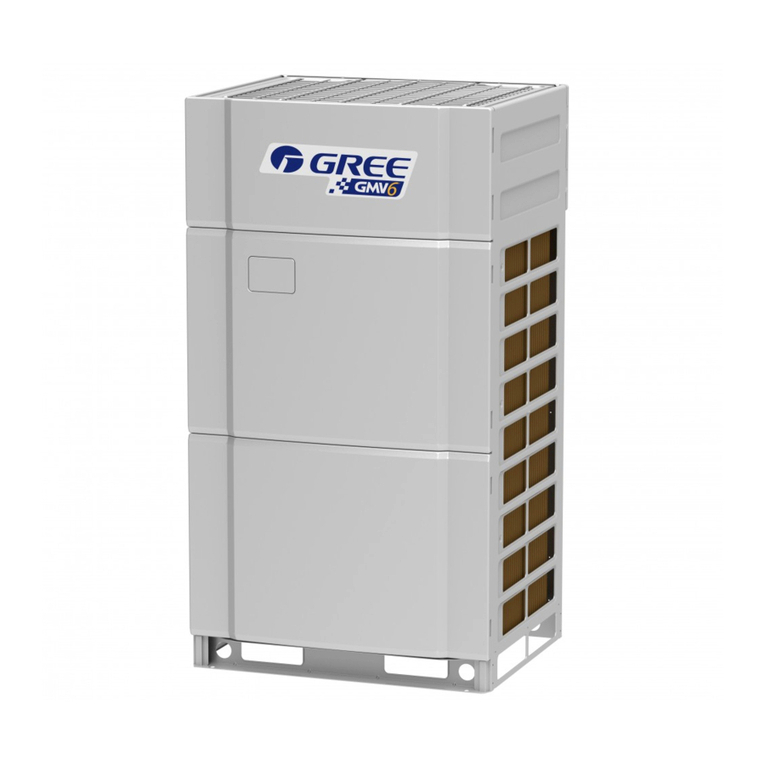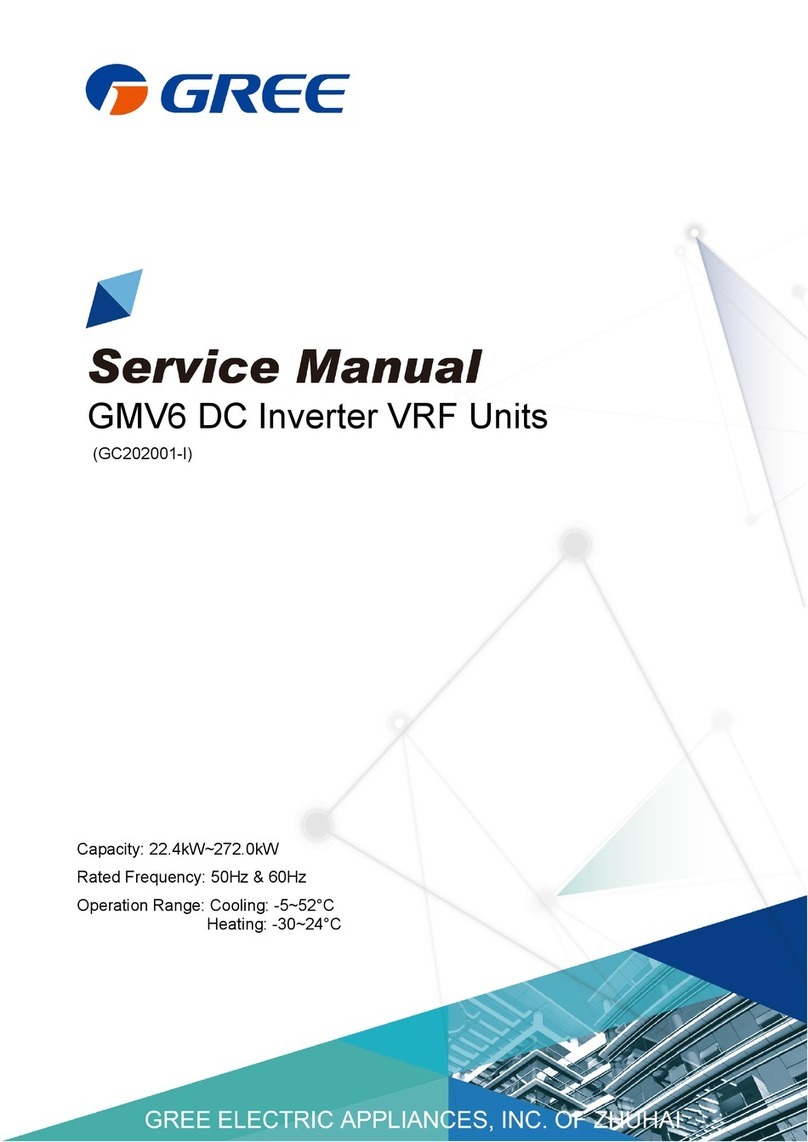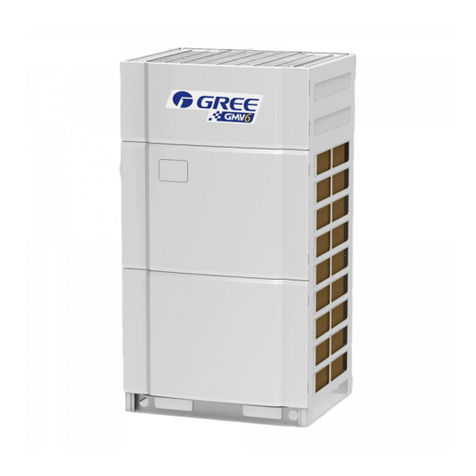
Contents
PREFACE............................................................................................................................1
SAFTY PRECAUTIONS......................................................................................................2
CHAPTER 1 INTRODUCTION TO BASIC FEATURES OF UNITS....................................7
1MODELS LIST .......................................................................................................................................................... 7
2BASIC OPERATING PRINCIPLE.......................................................................................................................... 7
3INTERNAL PIPING DESIGN OF THE UNITS ...................................................................................................... 8
3.1 Piping Diagram of GMV-72WM/B-F(U) and GMV-96WM/B-F(U)........................................................... 8
3.2 Piping Diagram of GMV-120WM/B-F(U)..................................................................................................... 9
3.3 Names and Main Functions of Components.......................................................................................... 10
4BASIC PARAMETERS OF UNIT.......................................................................................................................... 12
5ELECTRICAL PARAMETERS ............................................................................................................................. 15
6OPTIONAL ACCESSORIES................................................................................................................................. 18
7BASIC REQUIREMENT FOR PIPE CONNECTION ......................................................................................... 18
8PRECAUTIONS ON REFRIGERANT LEAKAGE............................................................................................. 21
9UNIT OPERATING TEMPERATURE................................................................................................................... 23
CHAPTER 2 INSTALLATION ...........................................................................................25
1ENGINEERING INSTALLATION PREPARATION ............................................................................................ 25
1.1 INSTALLATION SAFETY.............................................................................................................................. 25
1.2 IMPORTANCE OF INSTALLATION ENGINEERING................................................................................ 25
1.3 COOPERATION BETWEEN DIFFERENT PROFESSIONS.................................................................... 26
1.4 ONSITE REVIEW OF DESIGN DRAWING ................................................................................................ 29
1.5 CONSTRUCTION ORGANIZATION PROCESS....................................................................................... 30
2MATERIAL SELECTION....................................................................................................................................... 31
2.1 REQUIREMENT FOR SELECTING CONSTRUCTION MATERIALS ................................................... 31
2.2 REQUIREMENT FOR SELECTING MAJOR MATERIALS..................................................................... 31
3INSTALLATION SPACE REQUIREMENT.......................................................................................................... 32
3.1 PLACE SELECTION FOR INSTALLING ODU.......................................................................................... 33
3.2 ODU DIMENSIONS AND INSTALLATION HOLE SIZE........................................................................... 33
3.3 INSTALLATION SPACE REQUIREMENT FOR ODU .............................................................................. 35
4REQUIREMENTS ON FOUNDATION INSTALLATION.................................................................................... 43
4.1 ODU FOUNDATION....................................................................................................................................... 43
4.2 ODU FIXING.................................................................................................................................................... 44
4.3 VIBRATION REDUCTION FOR ODU ......................................................................................................... 44
5PIPING CONNECTION.......................................................................................................................................... 45
5.1 Schematic Diagram of Piping Connection ............................................................................................. 45
5.2 Schematic Diagram of Piping Sequence ................................................................................................ 46
5.3 Allowable pipe length and drop height among indoor and outdoor units..................................... 47
5.4 Connection Pipe among Outdoor Modules............................................................................................ 49
5.5 Fitting pipe between Outdoor Unit and the First Manifold................................................................. 51
6PIPE INSTALLATION AND INSULATION.......................................................................................................... 57
6.1 PIPE INSTALLATION FOR THE COOLING SYSTEM............................................................................. 57
6.2 PIPE INSTALLATION FOR THE CONDENSATE WATER SYSTEM..................................................... 65
6.3 INSULATION SYSTEM.................................................................................................................................. 70
7ELECTRIC AND CONTROLLER INSTALLATION............................................................................................ 72
7.1 PRECAUTIONS .............................................................................................................................................. 72
7.2 INSTALLATION OF THE POWER CABLE................................................................................................ 74
7.3 INSTALLATION OF THE COMMUNICATION SYSTEM.......................................................................... 78
8VACUUMIZATION AND DESICCATION FOR THE REFRIGERANT SYSTEM............................................ 86
8.1 AIR-TIGHTNESS TEST................................................................................................................................. 86
8.2 VACUUMIZATION AND DESICCATION FOR THE SYSTEM................................................................. 87
9REFRIGERANT PERFUSION.............................................................................................................................. 89
